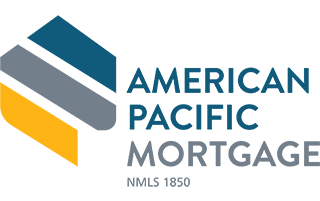Home Equity Loans on Rental Property: What Are Your Options
 There are homeowners who own more than one property. In some cases, these additional properties may be secondary homes (such as vacation homes); in other cases, they may be investment properties. One type of investment property is a rental property. If you own a rental property and you need additional funds for whatever reason (whether it’s to renovate the rental property or for other personal financial purposes), then you might be able to qualify for a home equity loan.
There are homeowners who own more than one property. In some cases, these additional properties may be secondary homes (such as vacation homes); in other cases, they may be investment properties. One type of investment property is a rental property. If you own a rental property and you need additional funds for whatever reason (whether it’s to renovate the rental property or for other personal financial purposes), then you might be able to qualify for a home equity loan.
What Defines a Rental Property
Mortgage lenders define rental properties as investment properties, which means that the property is not the primary residence of the homeowner and that it is rented out for the majority of the year to tenants who pay rent. Because they are investment properties and not primary residences, most lenders will charge higher interest rates and require a larger down payment on the initial mortgage. This is because there is a higher risk of default should the investment not pay off for the borrower (for example, they can’t find anyone to rent the property).
Home Equity Loans and Rental Properties
Home equity loans are loans taken against the equity available in the property (meaning, the amount of money you’ve paid off on your mortgage). Typically, you need to have around 20 percent equity in the property to be eligible for a home equity loan. If you’ve been approved for a home equity loan, you’ll be provided the loan in one lump sum, which you will pay off on a monthly basis (along with the interest being charged). The loan can then be used however you wish to use it.
But not all lenders are willing to underwrite home equity loans on rental properties due to the risk involved. This is because a home equity loan is a second mortgage that has to be paid off on top of your initial mortgage. Added to the fact that a rental property is not your primary residence, itis a potential financial risk (as all investments are), and this can scare some lenders away.
Home Equity Line of Credit (HELOC) and Rental Properties
A HELOC loan is a bit different. Although similar to a standard home equity loan in many respects: instead of getting a lump sum, you’ll be given a line of credit from which you can withdraw money. The lender will typically provide checks or a card to use attached to your line of credit.
What you need to know about HELOC
Because you’re given a line of credit, you’ll only pay interest on the money that you withdraw. The money you pay back on what you’ve withdrawn will be put back towards the line of credit. For example, if you have a $10,000 line of credit and you take out $8,000 and then repay $4,000, your line of credit available will be $6,000. A HELOC line of credit will usually provide a draw period between five and 10 years. Once the period is over, you’ll enter the repayment term during which you have to pay off the balance. A HELOC typically has a minimum withdrawal amount as well.
Key Differences Between HELOC and Home Equity Loans for Rental Properties
Although HELOC and home equity loans are similar in that they are both essentially loans taken out against the equity in your rental property, there are a few major differences to consider before you think about applying for either one.
The difference between Home Equity Loans and HELOC
The biggest difference between a home equity loan and a HELOC loan is that the home equity loan provides the loan up front and in cash as opposed to the HELOC loan, which is provided as a line of credit. As a result, HELOC loans are often a bit easier to obtain for an investment property. This is because you don’t have to begin making payments right away and you only pay interest on what you withdraw, whereas, with a home equity loan, you immediately have to begin making payments along with paying interest on the entire loan. This makes a home equity loan riskier because you have to pay more over the short-term.
A HELOC loan can provide more flexibility as the owner of a rental property as well. This is because you can use a small amount of your credit to make renovations, pay it back, and then still be able to withdraw from your line of credit for the duration of the term period for other improvements, renovations, or repairs that may come up.
Lending Criteria and taking the next step
Lending criteria are much more stringent when it comes to investment properties. For example, many lenders will require that you have owned the rental property for at least a year. Some even require that the rental property has already been rented out (to help ensure that your investment doesn’t fail at least for the first year of the loan) and that you have enough rental property insurance. They may also require that you have a history of successful real estate investment, which reduces the risk in their minds.
Credit Scores
Good credit is vital if you’re applying for either a HELOC loan or a home equity loan. The higher your credit is, the better; however, some lenders will accept credit scores as low as 680.
Underwriting
A lower LTV (loan-to-value) is required for investment property owners. Whereas homeowners typically have to have an LTV of 80 percent, lenders won’t usually accept higher than a 70 percent LTV for investment properties. A low debt-to-income ratio is required as well. While homeowners can get away with a 40 percent debt-to-income ratio, rental property owners can’t have more than a 30 to 35 percent debt-to-income ratio.
Conclusion
If you own a rental property, there’s a chance that at some point you’ll need a sizable chunk of money for basic maintenance and repairs. You may even want to pay for major renovations or remodeling work, allowing you to charge more for rent and by making your property more attractive to potential tenants. Instead of applying for a conventional loan to pay for these repairs or improvements, consider a home equity loan.
Deciding which type of home equity loan suits you best requires taking many factors into account, including your current financial situation and what you’re paying for. If you’re paying for a significant remodel or a significant repair (such as a roof replacement), a basic home equity loan might suit you best. However, if you need a smaller amount for general repair work and maintenance, a HELOC can be quite beneficial since you’ll have access to a line of credit that can be used over a longer period of time for multiple purposes.
The views, articles, postings, and other information listed on this website are personal and do not necessarily represent the opinion or the position of American Pacific Mortgage Corporation or US Lending Company.
* For loan examples and more information visit our disclosure page at https://www.uslendingcompany.com/disclosures/





